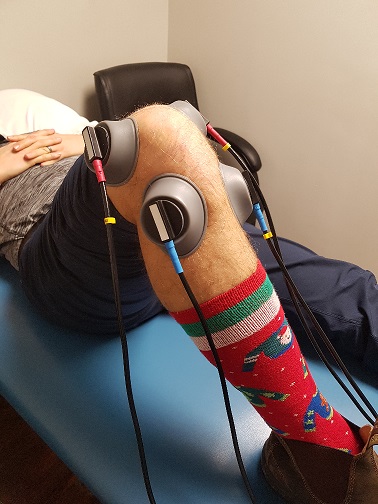Physiotherapy Guidelines Of Delayed Onset Muscle Soreness
With the New Year come new resolutions. One of the largest resolutions our Oakville Physiotherapists see is getting back to the gym, working out, and making sure snowmen are the only ones with an excessive waistline.  However, there is one very common diagnosis that is out to get everyone in the New Year. His name is Delayed Onset Muscle Soreness, DOMS for short. DOMS is defined as muscle soreness following unaccustomed activity that occurs after cessation of activity. Our Physiotherapists work with this weekly at the clinic and its not as bad as you think.
However, there is one very common diagnosis that is out to get everyone in the New Year. His name is Delayed Onset Muscle Soreness, DOMS for short. DOMS is defined as muscle soreness following unaccustomed activity that occurs after cessation of activity. Our Physiotherapists work with this weekly at the clinic and its not as bad as you think.
READ MORE ABOUT DELAYED MUSCLE SORENESS HERE
What is the cause of this achy feeling? It is the microscopic tearing of muscles fibers due to heavy unaccustomed exercise, typically eccentric exercises. When a muscle is contracting while it lengthens eccentric activity has occurred. For example, running downhill, descending stairs, lowering weights, the downward movement of a push up or squat to name a few.
DOMS clinically presents with increased sensitivity to touch, soreness, swelling, stiffness, muscle spasm and inflexibility. The hallmark presentation is that DOMS tends to begin 8-24 hours after exercise and peaks 24-72 hours post-exercise. The soreness normally increases in intensity during the 1st 24 hours after exercise and peaks in 24-72 hours, then subsides over the next 3-7 days.
READ MORE HERE about delayed onset muscle soreness
The majority of us will experience DOMS on a return to the gym this time of year, so what exactly should we do to treat it after it’s occurred? Gentle exercise of the sore muscle will provide temporarily relief. This is because exercise causes break-up of adhesions from the injured muscle, increases blood flow to decrease noxious waste products, releases endorphins and increases the afferent input noted from large, low-threshold sensory units in muscles.
Gentle exercise of the sore muscle will provide temporarily relief. This is because exercise causes break-up of adhesions from the injured muscle, increases blood flow to decrease noxious waste products, releases endorphins and increases the afferent input noted from large, low-threshold sensory units in muscles.
Want to learn about how and why to ice your pain click HERE
Recommended Treatments For DOMS
Our Physiotherapists recommend Trans Electrical Nerve Stimulation (TENS) or Interferential Current (IFC) machines along with pulsed ultrasound will also reduce DOMS. All is not lost though as a preventative measure to limit feeling DOMS is a gradual exercise program. For example, instead of doing your 3 sets of 10 of 20 different exercises all ‘hitting’ similar muscle groups, try only doing 2 sets of 8 and picking 6-10 major muscle groups to exercise before beginning a specific exercise program weeks down the road.
However, you should visit with your physiotherapist to get a thorough assessment to make sure a differential diagnosis such as a grade 1,2 or 3 muscle tear has not occurred or the injury is not just muscle cramps.